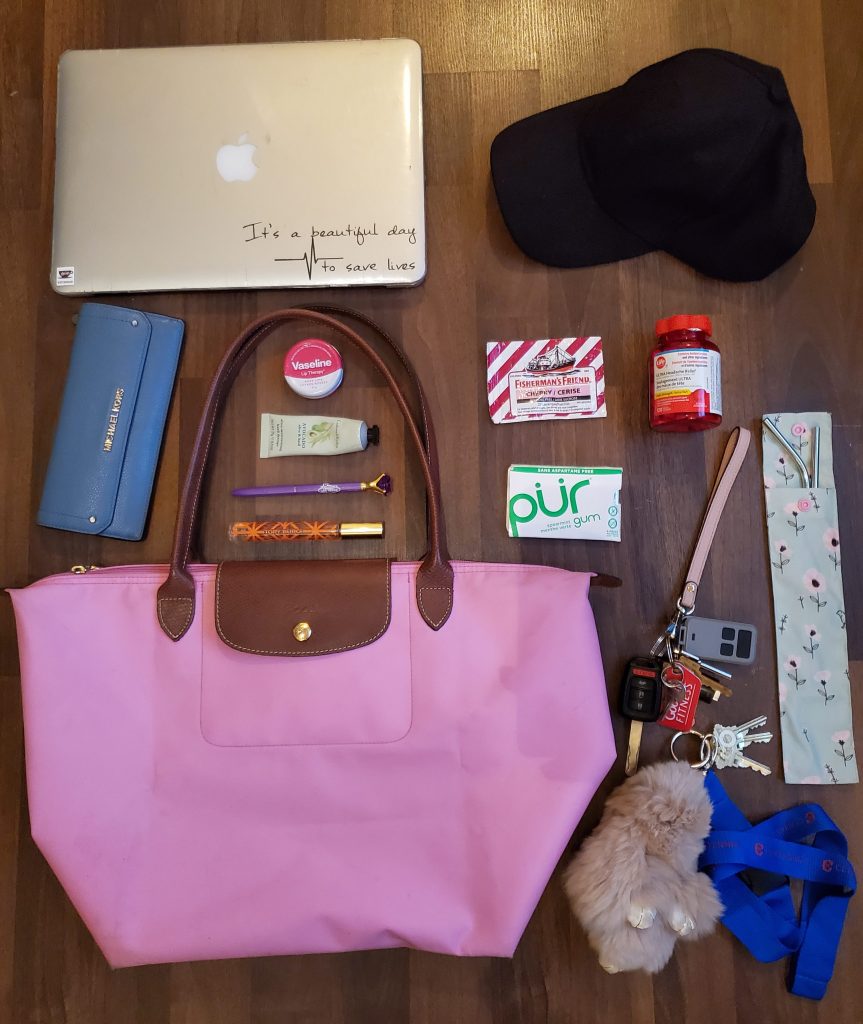
My name is Elizabeth Kim and I’m a secondary science teacher in the Coquitlam school district. I’ve taught many different courses in science and math over the years, but currently I am teaching junior sciences, chemistry and science for citizens. I’m halfway through the MET program- and am on my 6th, 7th and 8th course this term.
This is the bag I usually use for work and daily activities. These are some of the items that you can find in it:
- Two sets of keys (one for my personal use and one for work)
- A wallet
- Laptop
- Two reusable straws in a cute pouch that my mom made (she is a guru with all things sewing)
- My favourite hat (always be prepared for a bad hair day)
- Varies staple beauty products (lip balm, hand lotion, perfume)
- A pen
- Fisherman’s friend & gum (for the sore throat brought by the beginning of the school year)
- Acetaminophen (for ultra headache relief)
Not pictured is the cellphone I used to take this picture, but it is probably one of the most important items I carry around with me.
I think it’s interesting to see the different ways these items can be used as text technologies. In the more obvious sense, my laptop and cellphone are used to communicate and engage with language in a digital way. However, in my wallet, you’ll find more subtle examples of text technologies. The text on my driver’s license which gives personal information about myself, or even the text “Michael Kors” on the wallet which portrays an approximate value of the item. My keys contain a scan-in gym membership card, a usb, car keys, and a garage remote, which all contain digital information to allow me to carry out specific functions in my day to day life. In a more traditional sense, the pen can also be used for communication with others and with myself.
Text technologies has changed over the years. 15 or 20 years ago, my bag would not have had the advanced technology of laptops, convenient cards and cellphones. Reusable straws were also not considered a necessary back then, so it would probably not have been included in my daily bag. The biggest difference is the advancements in technology. My bag would probably contain more paper-based notebooks, pens, erasers, etc. compared to the compact technology I carry around today.
This is an exciting idea to think about- that just two decades ago, my bag would have looked so much different. What will my bag look like two decades from now? What kind of new text technologies will I have daily access to and consider a part of my life? In this course, I hope to explore some of the technologies that have been developed and the process in order to understand what the future of text technologies might look like.